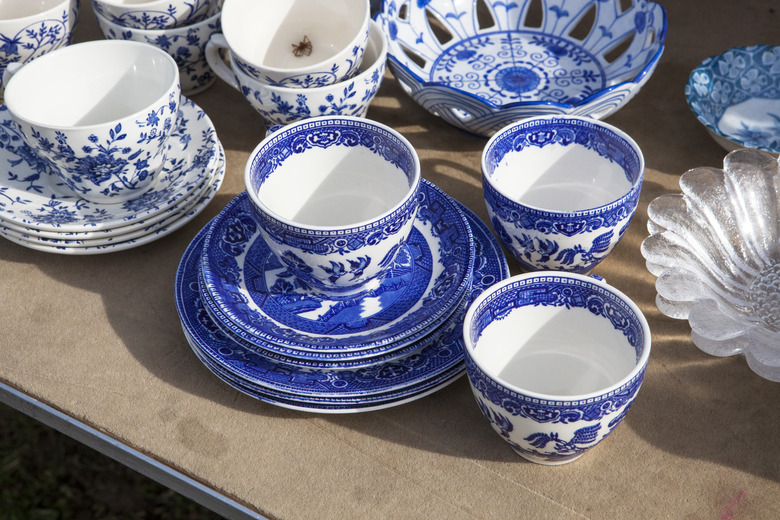How To Tell If Old China Dishes Are Valuable
Just because ceramic china dinnerware looks old, it doesn't mean that it's valuable. Spider cracks in glaze coats can happen during the firing process and not just come from age, which makes spidering a questionable identification technique. The first steps in establishing the value of china dinnerware begin with identifying the type of china, the manufacturer, the artist or its age. Once you know the answer to one or more of these questions, you can determine the value of your old china dishes.
Various Ceramic Types
Various Ceramic Types
Potters and artists use different clays when making ceramics, so knowing the type of clay can help you establish the china's value. Fine porcelain china was first made for the royal families in China during the Song Dynasty between 960 and 1127 A.D. after the discovery of a material called kaolin clay that fires at higher temperatures and creates glass-like white porcelain.
English potters failed to replicate the recipe, but in 1796, Josiah Spode added ground-up ox bones into the mix to create bone china. Both porcelain and fine bone china have a white glassy surface, but bone china is lighter, stronger and more translucent than porcelain. When china dishes are thick and heavy, they more than likely contain red, brown or gray clays.
Country of Origin
Country of Origin
For china made after 1890, the McKinley Tariff Act required that goods imported into the United States must contain a country of origin stamp. So, if the dishware contains a country name on its underside, there's a chance it was made after 1890. But, before that time, many manufacturers also included the name of the country or at least the pottery company's location, such as Limoges china, which indicates the region in France where the china was first made after a deposit of kaolin clay was discovered nearby in 1771.
Another high-quality, old porcelain china, Meissen, bears the name of the region in which it originated — the Saxony state in Eastern Germany — where production began in 1710. An American entrepreneur, David Haviland, opened a factory in Limoges to make china dishes to sell to U.S. customers in 1842, marked with Haviland and Limoges, France imprints.
While the first few pieces of dishware that came out of a pottery may not have a mark, manufacturers quickly took to adding a symbol or a hallmark — a logo — that identified the pieces they made. For example, Meissen china often bore the crossed swords symbol in a variety of forms over the years.
Porcelain companies often changed the hallmark for a specific line, by year, or updated it as necessary. Some marks contain a single letter, numbers, initials or symbols. English china often contains royal symbols, unicorns, lions or the crown, for example.
Establishing Value of China Dishes
Establishing Value of China Dishes
Once you've located a hallmark or some other identifying feature on the back of dishes, saucers and the bottoms of cups, compare it to online sites, information in books, or take the item to an antique collector or appraiser to establish its value. While you can check online auction or craft sites to see the prices stipulated by other sellers, for best results, contact a professional, as these methods may not indicate true or full value.
Sites that offer replacements pieces for your china dishware set may be able to give you an overall idea of the replacement value of individual pieces as well as the most collectible china patterns. Overall, the more complete the set, the better its condition, and the rarity of old china dishware — all add up to a higher value than new pieces.
